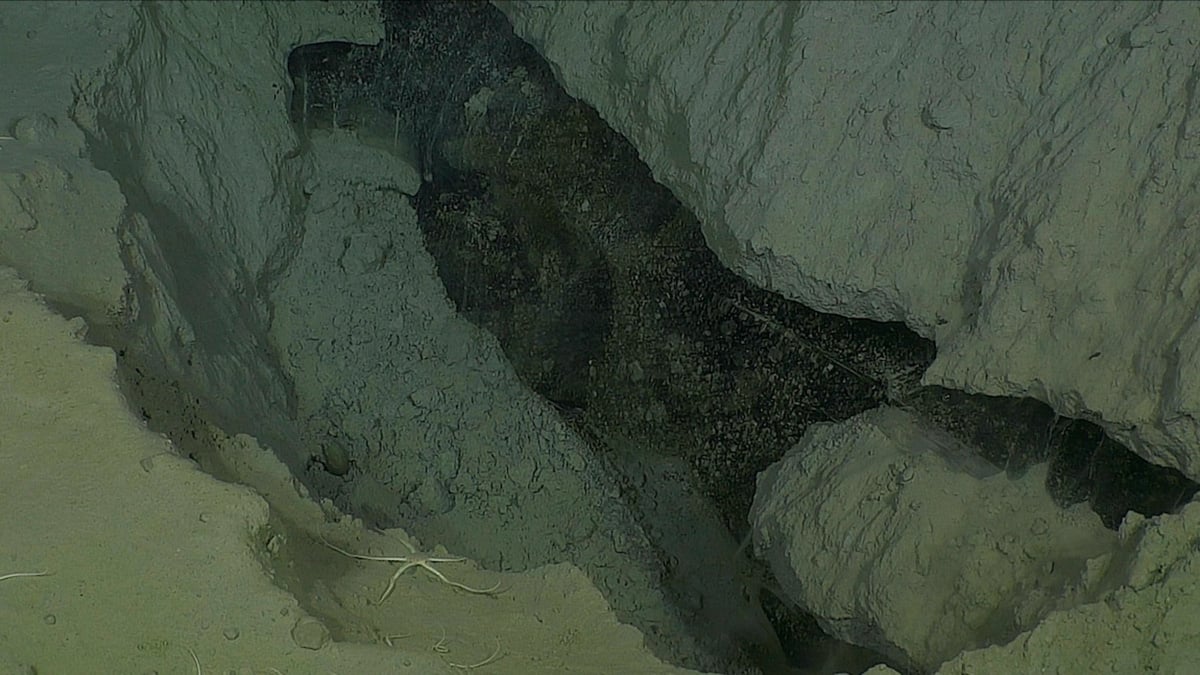
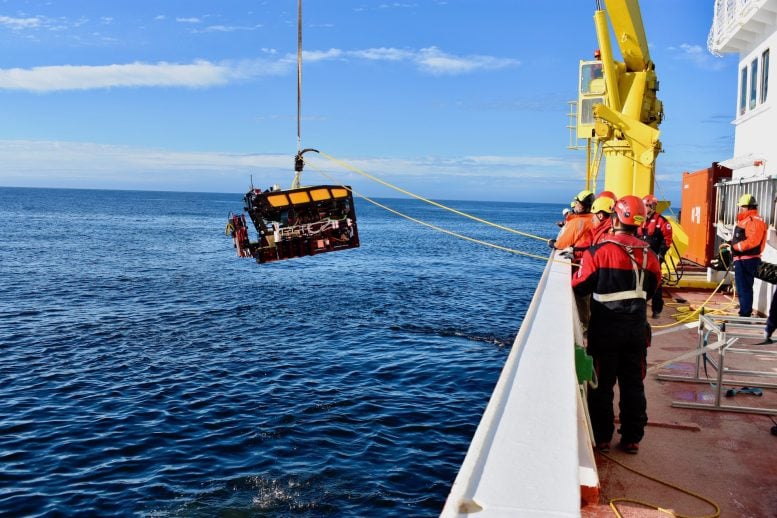
A group of international researchers utilized the advanced underwater technology from MBARI to explore and record the changes in underwater landscapes in a remote Arctic region, focusing on the effects of melting permafrost and the formation of new ice.
Researchers from Monterey Bay Aquarium Research Institute (MBARI), in collaboration with an international team, have discovered extensive underwater ice formations along the edge of the Canadian Beaufort Sea, in a remote Arctic region. This finding uncovers a previously unknown process contributing to the continued formation of submarine permafrost ice.
In a previous MBARI study, researchers observed enormous craters on the seafloor in this area, attributed to the thawing of ancient permafrost submerged underwater. While exploring the flanks of these craters on a subsequent expedition, MBARI researchers and collaborators from the Korea Polar Research Institute (KOPRI), the Korea Institute of Geoscience and Mineral Resources, the Geological Survey of Canada, and the U.S. Naval Research Laboratory observed exposed layers of submarine permafrost ice.
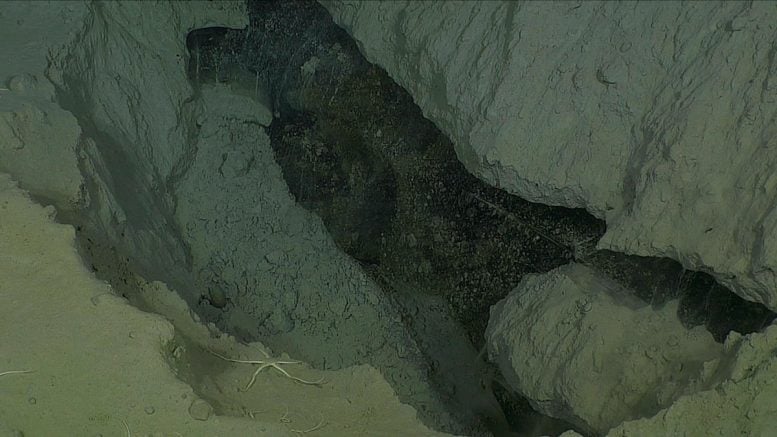
Formation of Modern Submarine Permafrost Ice
The recently discovered layers of ice are not the same as the ancient permafrost formed during the last ice age, but rather were created under present-day conditions. This ice is produced when deeper layers of ancient submarine permafrost melt, creating brackish groundwater that rises and refreezes as it approaches the seafloor, where the ambient temperature is approximately -1.4 degrees Celsius (29.5 degrees Fahrenheit).
The complex morphology of the seafloor in this region of the Arctic tells a story that involves both the melting of ancient permafrost that was submerged beneath the sea long ago and the disfiguration of the modern seafloor that occurs when released water refreezes.
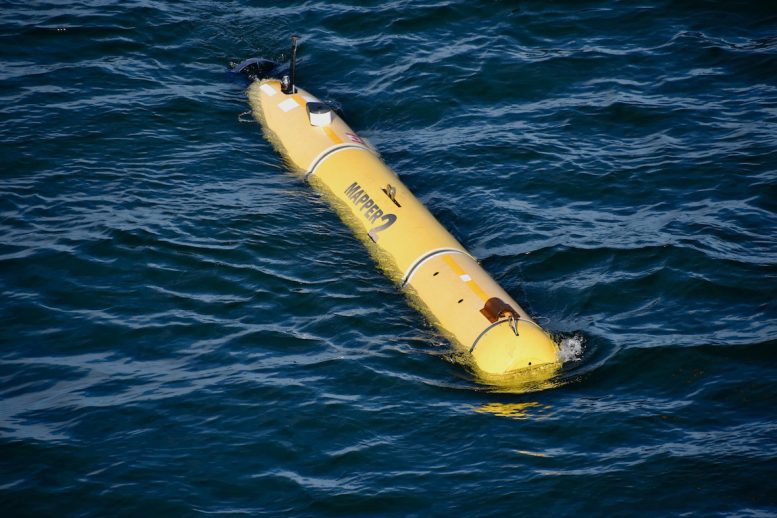
After the last ice age, sea levels rose and covered the ancient permafrost on the Arctic shelf. The base of this body of ancient permafrost is slowly warming and thawing because of heat flowing out of the Earth—much older, slower climatic shifts are contributing to the melting of this Arctic submarine permafrost, not human-driven climate change. When this water migrates up to the colder seafloor, it freezes. Freezing ice pushes up ridges and mounds. Seawater seeps into the blistered seafloor surface, melting the ice layers and leaving massive sinkholes behind. The dynamic interplay between large changes in salinity and small changes in temperature near the seafloor drives this process.
The research team has published these new findings in the Journal of Geophysical Research: Earth Surface.
Implications for Arctic Policy and Infrastructure
“Our work shows that permafrost ice is both actively forming and decomposing near the seafloor over widespread areas, creating a dynamic underwater landscape with massive sinkholes and large mounds of ice covered in sediment,” said Charlie Paull, a geologist at MBARI and the lead author of the study. “These dramatic and ongoing seafloor changes have huge implications for policymakers who are making decisions about underwater infrastructure in the Arctic.”
Since 2003, MBARI has been part of an international collaboration to study the seafloor at the edge of the Canadian Arctic shelf. This remote area that only recently became accessible to scientists as warmer temperatures caused sea ice to retreat.
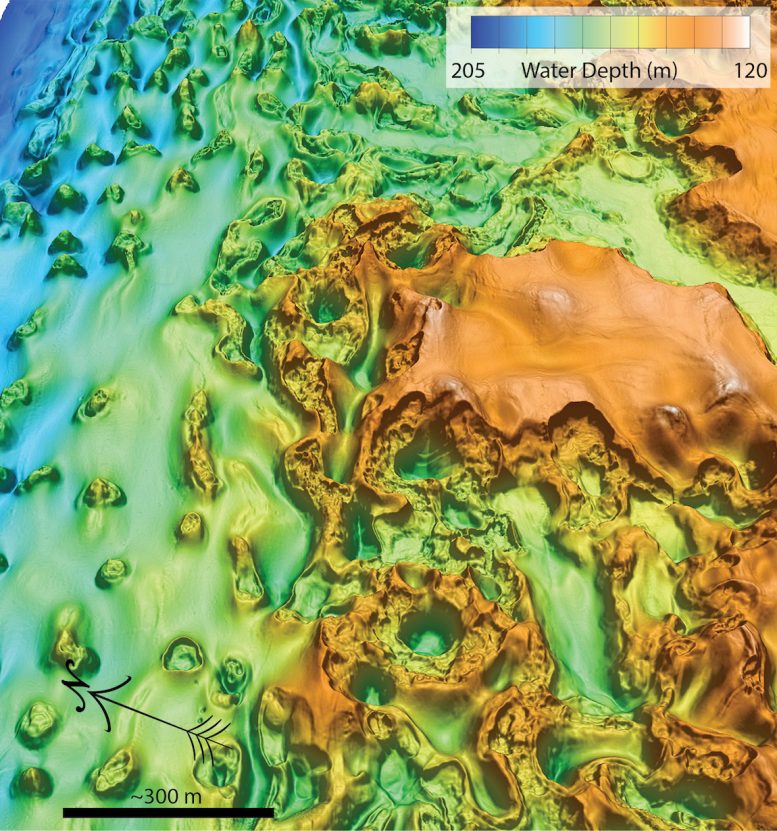
A mapping survey by Canadian researchers in 2010 first uncovered the region’s distinctively rugged seafloor terrain. In 2013, MBARI researchers and their collaborators conducted the first high-resolution mapping surveys in this region. Using an MBARI autonomous underwater vehicle (AUV), the research team documented the seafloor terrain in detail.
Five mapping surveys—two conducted from Canadian research ships and three with MBARI’s advanced underwater technology—in this area over a 12-year period revealed 65 newly-formed craters on the seafloor. The largest crater was the size of a city block of six-story buildings.
In 2022, the team returned to the Arctic aboard KOPRI’s icebreaker research vessel Araon. They first used MBARI’s two seafloor mapping AUVs to identify recently formed craters. Then, they conducted visual surveys within those specific craters with MBARI’s MiniROV. This portable remotely operated vehicle developed by MBARI engineers can be configured for a variety of science missions. Equipped with cameras and sampling equipment, it has been integral to studying the Arctic seafloor. While exploring the seafloor with the MiniROV, researchers observed ice formations inside two recently formed large seafloor craters.
Formation of Ice from Brackish Groundwater
Isotopic analysis of these formations and samples of the surrounding seafloor sediments confirmed that the ice came from brackish groundwater, created partly by the melting ancient permafrost rising up through the seafloor. The ascending groundwaters refreeze near the seafloor, forming widespread sub-bottom ice layers that blister the seafloor, producing ice-cored mounds.
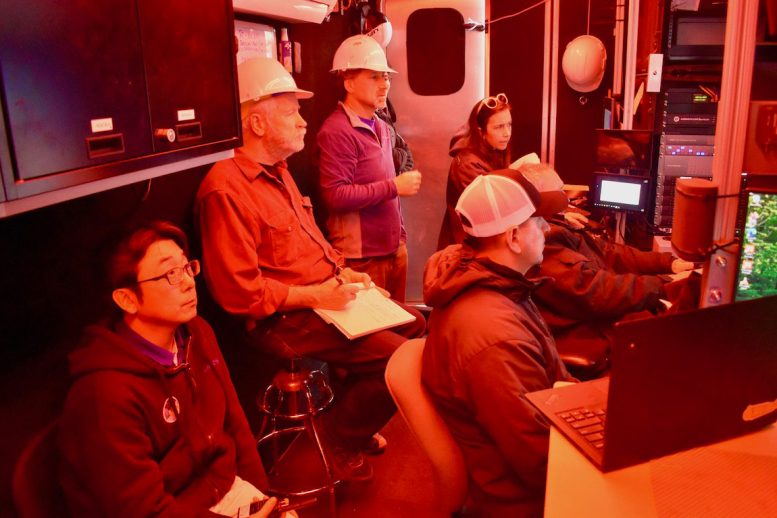
Minor temperature and salinity variations cause shifts between the freezing of ascending brackish groundwater and the melting of near-seafloor ice layers. These ongoing processes work in tandem to create a dramatic submarine landscape composed of numerous depressions and ice-filled mounds of varying ages.
“These findings upend our assumptions about underwater permafrost,” said Paull. “We previously believed all underwater permafrost was leftover from the last ice age, but we’ve learned that submarine permafrost ice is also actively forming and decomposing on the modern seafloor.”
The process that creates these sub-seafloor ice formations has not been considered before and may occur where bottom-water temperatures are below zero degrees Celsius.
“This discovery means that the techniques we’ve previously used to locate submarine permafrost don’t work for the types of near-seafloor ice that we recently discovered exist in the Arctic. We now need to revisit where permafrost may exist under the Arctic Shelf,” said Paull.
Reference: “Massive Ice Outcrops and Thermokarst Along the Arctic Shelf Edge: By-Products of Ongoing Groundwater Freezing and Thawing in the Sub-Surface” by Charles K. Paull, Jong Kuk Hong, David W. Caress, Roberto Gwiazda, Ji-Hoon Kim, Eve Lundsten, Jennifer B. Paduan, Young Keun Jin, Mathieu J. Duchesne, Tae Siek Rhee, Virginia Brake, Jeffrey Obelcz and Maureen A. L. Walton, 25 September 2024, Journal of Geophysical Research: Earth Surface.
DOI: 10.1029/2024JF007719
This work was funded by the David and Lucile Packard Foundation, the Korean Ministry of Ocean and Fisheries (KIMST grant No. 20210632), the Geological Survey of Canada, and the U.S. Naval Research Laboratory.